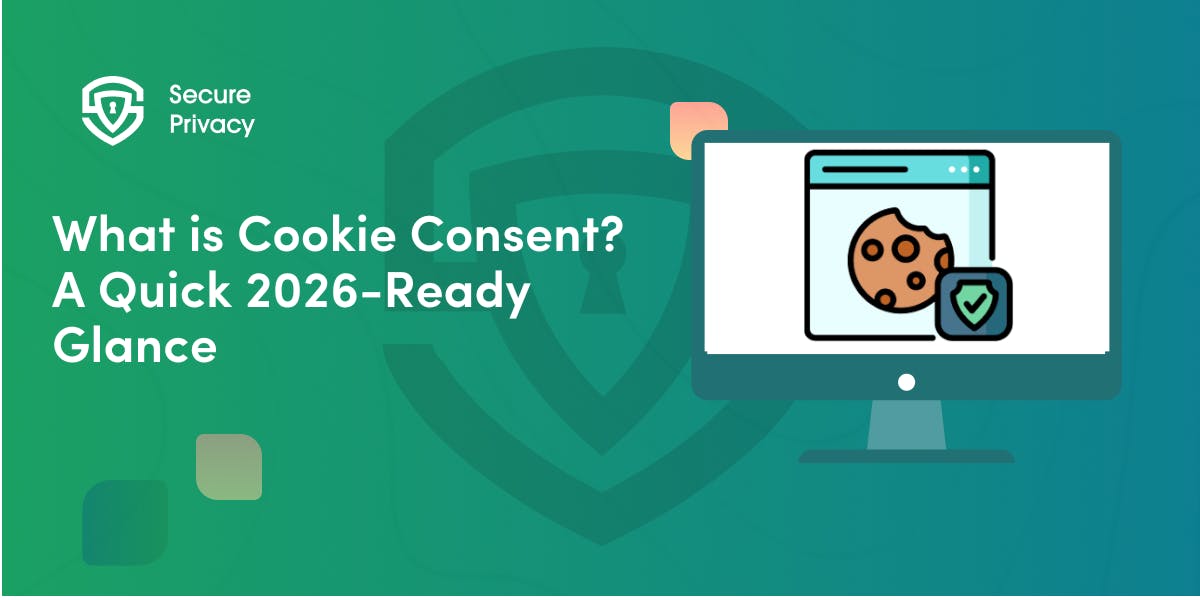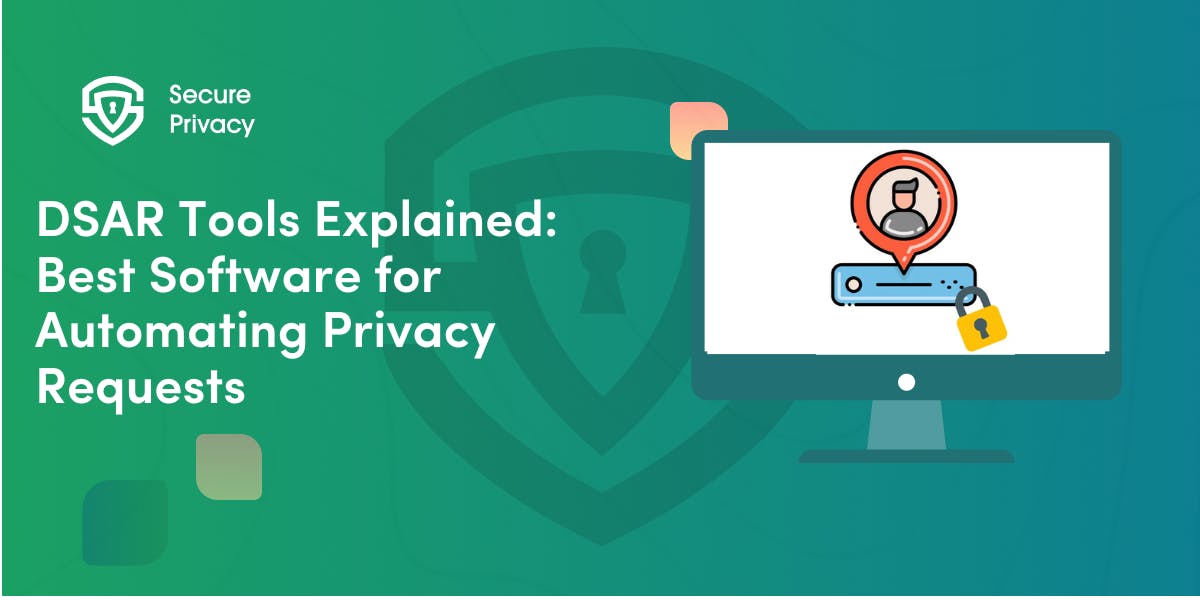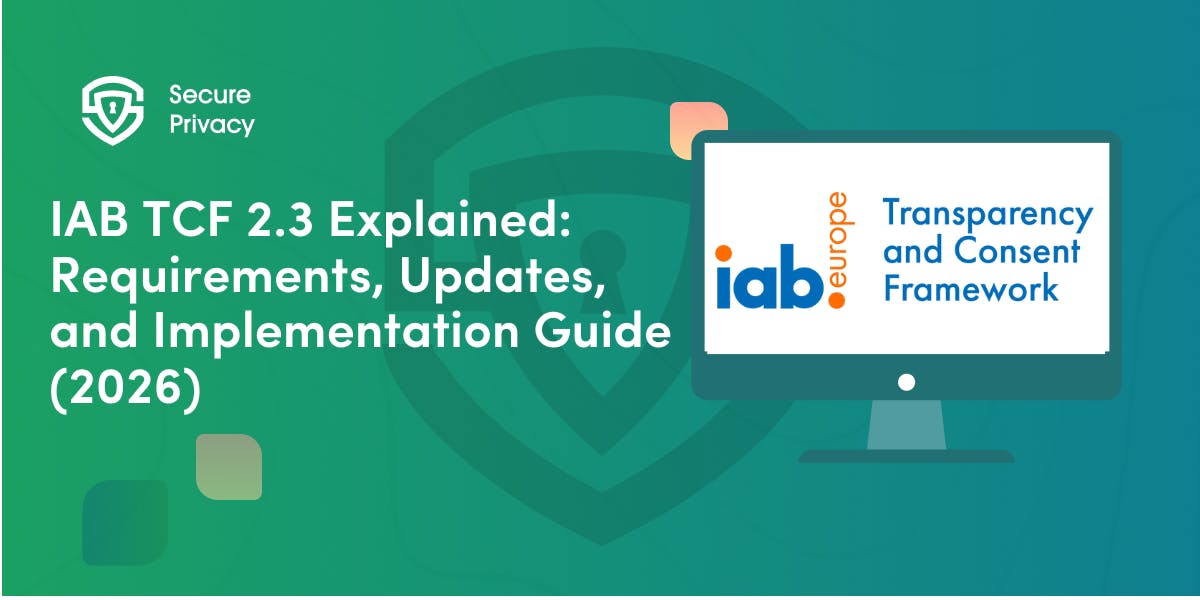Beyond the "Accept All" Button in Certain Cookie Banners: Avoiding Dark Patterns in Cookie Consent Notices
Learn how to navigate cookie consent notices ethically, avoiding deceptive designs and empowering users. Explore strategies to align with privacy regulations while optimizing website functionality.
As business and website owners, we understand the importance of cookies in providing personalized experiences and optimizing our digital offerings. Cookies allow us to better understand user behavior, tailor content, and deliver more relevant advertising - all of which can enhance the overall user experience.
However, we also recognize the growing concerns around user privacy and the need to provide clear, transparent consent mechanisms. The European Data Protection Board has emphasized the importance of respecting user privacy and ensuring that individuals can easily withdraw their consent.
In this blog post, we will explore the delicate balance between utilizing cookies to improve our website's functionality and respecting the digital rights of our users. We will examine the various "dark patterns" - deceptive designs of user interfaces - that can sometimes be found in cookie consent notices, and discuss strategies for creating consent flows that empower users while aligning with our business objectives.
What are dark patterns?
Dark patterns are user interface design choices that manipulate users into taking actions that are against their best interests. They exploit human psychology and behavior to influence user decisions, often in a deceptive or coercive manner.
How can dark patterns be used in cookie consent processes?
Dark patterns can be manipulative and deceptive in the context of cookie consent processes. One common dark pattern is pre-checked cookie consent boxes that trick users into accepting cookies without fully understanding what they're agreeing to. Misleading or confusing consent language can also obscure the choices available to users, making it difficult for them to make an informed decision.
Another dark pattern is the use of "consent walls" - blocking access to content until the user agrees to all cookie tracking, even if they would prefer more granular control. Trick questions or distracting elements within the consent flow can also be used to sway user decisions in the direction desired by the website operator, rather than the user's best interests.
Perhaps most insidiously, dark patterns can involve hiding or burying the options to opt-out of cookie tracking, making them difficult for users to find and exercise their preferences. These tactics undermine user privacy and autonomy, going against the principles of genuine, informed consent that data protection regulations aim to uphold.
Avoiding such dark patterns in cookie consent is crucial for building trust with users, complying with the law, and demonstrating a commitment to ethical data collection practices. Consent processes should empower users, not deceive or manipulate them.
Why is it important to avoid dark patterns in cookie consent practices?
There are several key reasons why it is crucial for website owners to avoid using dark patterns in their cookie consent practices:
- Many data protection regulations, such as the EU's GDPR, explicitly prohibit the use of dark patterns in consent flows. Employing these manipulative tactics can lead to regulatory investigations, hefty fines, and reputational damage for non-compliant organizations.
- For consent to be legally valid under data protection laws, it must be freely given, specific, informed and unambiguous. Dark patterns undermine these core consent requirements by preventing users from making a genuine choice.
- User trust and transparency: Data protection principles emphasize the need for transparency in data processing activities. Dark patterns obscure information and make it difficult for users to understand how their data will be used, eroding user trust in the website.
- Ethical data practices: Using dark patterns is widely considered an unethical and deceptive practice, as it prioritizes the website's data collection goals over the user's privacy rights and autonomy. Upholding ethical data practices is crucial for maintaining a positive brand reputation.
- Evolving regulatory landscape: As data privacy laws continue to evolve globally, the use of dark patterns is likely to face increasing scrutiny and enforcement action. Website owners should proactively align their consent flows with best practices to future-proof their compliance.
Fundamentally, the cookie consent process should empower users, not exploit them.
What are common dark patterns in cookie banners?
Some common dark patterns encountered in cookie consent processes include pre-checked boxes that automatically enable cookie tracking, misleading or vague language that obscures the nature and purpose of data collection, and "consent walls" that block access to content until the user agrees to all cookie tracking. These tactics strip away user autonomy and undermine the ability to make meaningful choices about personal data sharing.
What are some types of dark patterns used in cookie consent, such as pre-checked boxes, misleading language, and consent walls?
Dark patterns undermine the principles of valid consent and user autonomy, and can lead to non-compliance with data protection regulations. Here are some common examples of dark patterns used in cookie consent practices:
- Pre-checked consent boxes:
- - This occurs when the cookie consent banner has checkboxes or toggles pre-checked by default, requiring the user to actively uncheck them to opt-out of cookie tracking.
- This design choice can be misleading, as users may assume that the pre-checked boxes represent the default or recommended setting, rather than understanding that they need to uncheck them to protect their privacy. - Misleading language:
- - Websites may use vague, ambiguous or euphemistic language to describe the purpose and effects of cookies, obscuring the true nature of data collection.
- For example, using terms like "improve your experience" or "personalize content" instead of clearly stating that the cookies are used for targeted advertising or tracking user behavior. - Consent walls:
- - Consent walls, also known as cookie walls, are a form of dark pattern where users are blocked from accessing the website's content unless they accept all cookies.
- This practice leaves users with no choice but to consent to the website's data collection practices if they want to use the site, effectively coercing them into giving up their privacy rights.
- These manipulative patterns become even more problematic on Android TV and connected devices where limited interface options can unintentionally create consent walls through technical constraints rather than intentional design." - Misleading or manipulative button designs:
- - Websites may use button designs, colors, or placements that draw the user's attention towards the "Accept All" option, while making the "Reject" or "Customize" options less prominent or visually appealing.
- This can lead users to assume the "Accept All" button is the recommended or default choice, even if it is not their preferred option.
iOS and tvOS consent interfaces must avoid dark pattern manipulation. - Lack of granular control:
- - Some consent flows may not provide users with the ability to selectively accept or reject different categories of cookies based on their preferences.
- Instead, they may only offer a binary choice between accepting all cookies or rejecting all cookies, limiting the user's ability to exercise meaningful control over their data.
How can dark patterns be implemented in cookie banners and consent notices?
Dark patterns can be incorporated into cookie banners and consent notices in a variety of ways. One common tactic is the use of pre-checked boxes that automatically enable cookie tracking unless the user manually unchecks them. This undermines the principle of freely given consent by making it the default for users to agree to data collection.
Another dark pattern involves the use of unclear or ambiguous language in the consent process. This can make it difficult for users to understand exactly what data is being collected and how it will be used, preventing them from making a truly informed decision.
Cookie consent flows may also present prominent "Accept All" buttons while hiding or downplaying options to "Manage Settings" or "Decline" cookies. This skews the user's choices by making it much easier to grant broad consent rather than exercise granular control.
Some consent notices go even further by presenting a monolithic "Accept/Decline" choice, rather than allowing users to selectively agree to different categories of cookies. This eliminates user autonomy and the ability to make nuanced decisions about data sharing.
Finally, dark patterns can manifest in the overall design and flow of the cookie consent process. Consent flows that are difficult to navigate or exit without granting broad consent can coerce users into relinquishing control over their personal data.
How can dark patterns impact user consent and data protection?
Dark patterns in cookie consent can have a significant negative impact on user consent and data protection in several ways:
- Undermining valid consent: For consent to be legally valid under data protection laws like the GDPR, it must be freely given, specific, informed and unambiguous. Dark patterns prevent users from making a genuine, informed choice, as they use manipulative tactics to steer users towards accepting cookies. This can render the consent invalid.
- Skewing consent rates: Dark patterns are often designed to maximize cookie acceptance rates, rather than empower users. This can lead to artificially inflated consent rates that do not reflect the user's actual privacy preferences.
- Violating transparency principles: Data protection regulations emphasize the need for transparency in data processing activities. Dark patterns obscure information and make it difficult for users to understand how their data will be used, breaching this core principle.
- Eroding user trust: When users feel their choices have been manipulated, it can severely damage their trust in the website and its data handling practices. This erosion of trust undermines the fundamental principles of data protection.
- Regulatory non-compliance: Many jurisdictions, such as the EU under the GDPR, explicitly prohibit the use of dark patterns in consent flows. Employing such tactics can lead to regulatory investigations, fines and reputational damage for the website owner.
How do regulations address dark patterns in cookie consent?
Data protection regulations like the GDPR and CPRA specifically prohibit the use of dark patterns in cookie consent processes. These laws require that consent be freely given, meaning it cannot be obtained through coercion or deception.
The consent must also be specific, with users granted the ability to granularly accept or decline different categories of cookies. This stands in contrast to the dark pattern of presenting a monolithic "Accept/Decline" choice.
Furthermore, these data protection regulations mandate that consent be informed. The purposes of any data processing must be clearly disclosed to users in plain, easy-to-understand language, rather than obscured through vague or technical wording.
Regulators have demonstrated a willingness to take enforcement action against companies found to be employing dark patterns that violate these key principles of freely given, specific, and informed consent. Substantial fines and other penalties can be levied for non-compliance, underscoring the importance of designing ethical, user-centric cookie consent flows.
How can you design ethical cookie consent practices?
Designing ethical cookie consent practices requires a steadfast commitment to transparency, user empowerment, and strict adherence to data protection principles. The overarching objective should be to provide individuals with clear, granular control over how their personal information is collected and used through the cookie consent process. This means crafting consent flows that respect user autonomy and enable meaningful choices, rather than employing manipulative tactics or coercive measures to obtain broad data access.
At the heart of ethical cookie consent design lies the principle of freely given consent. Consent must never be obtained through deception, undue influence, or the imposition of unfair conditions that leave users with no real choice. Cookie consent practices should empower individuals to make informed decisions about data sharing by presenting information in plain, easy-to-understand language and avoiding the use of technical jargon or obfuscation.
The specificity of consent is another critical element. Users should be given a clear breakdown of different cookie categories, with the ability to selectively accept or decline each one based on their preferences. Prominent "Decline" or "Manage Settings" options should be provided alongside any "Accept" buttons, ensuring users have a clear path to exercising their preferences and not feeling trapped into a binary "all-or-nothing" decision.
What are the best practices for providing clear, simple, and straightforward consent options?
Best practices for clear, straightforward consent options include presenting information in plain, easy-to-understand language and avoiding technical jargon or obfuscation. Users should be given a clear breakdown of different cookie categories, with the ability to selectively accept or decline each one. Prominent "Decline" or "Manage Settings" options should be provided alongside any "Accept" buttons, ensuring users have a clear path to exercising their preferences.
How can you avoid pre-checked boxes, confusing language, and overly complex consent flows?
To steer clear of dark patterns, cookie consent flows should never feature pre-checked boxes that automatically enable data collection. This practice of pre-checking boxes deprives users of true consent, as it implies a default acceptance of cookie usage rather than an active, freely given choice.
The language used in the consent flow should be direct and unambiguous, clearly explaining the purposes of cookie usage in a transparent manner. Overly technical jargon or obfuscation can confuse users and undermine their ability to make informed decisions about their data. Consent processes should avoid using vague or misleading terms that downplay the implications of cookie acceptance.
Additionally, consent processes should be streamlined and intuitive, avoiding unnecessary complexity that could overwhelm or confuse users. Overly complex flows with multiple steps, confusing navigation, or a lack of clear instructions can discourage users from engaging with the consent options or lead them to hastily grant broad access to their data.
What are some techniques for ensuring cookie consent flows are intuitive and user-friendly?
Techniques for creating user-friendly consent flows include organizing cookie categories and consent options in a logical, easy-to-understand manner. Users should be presented with a clear breakdown of the different types of cookies, such as essential, functional, analytical, and marketing cookies, along with concise explanations of their purposes.
Providing prominent "Decline" or "Manage Settings" options alongside any "Accept" buttons ensures users have a clear path to exercising their preferences and not feeling trapped into a binary "all-or-nothing" decision. This empowers individuals to make granular choices about the data they are willing to share.
Consent flows should also be responsive and accessible, working seamlessly across different devices and for users with disabilities. Incorporating clear visual cues, such as intuitive icons or color-coding, can further enhance the intuitiveness of the consent process.
Additionally, providing step-by-step instructions and tooltips can guide users through the consent flow, helping them understand their options and make informed decisions. This level of user guidance can be particularly helpful for individuals who may be less tech-savvy or unfamiliar with cookie consent procedures.
Who can help you legally design your cookie banner?
Business owners can leverage several resources and tools to help them legally design their cookie consent banners. Reaching out to local data protection authorities, such as the Information Commissioner's Office (ICO) in the UK or the CNIL in France, can provide valuable guidance on cookie consent requirements and best practices for compliance.
Additionally, engaging with privacy law experts who specialize in cookie consent and data protection regulations can help website owners navigate the legal complexities and ensure their consent banner meets all necessary requirements.
Furthermore, many third-party vendors offer cookie consent management solutions that are designed to be legally compliant, and these platforms can assist website owners in creating, customizing, and maintaining their cookie consent banner.
How can you leverage Google Consent Mode v2 for transparent consent management?
Google's Consent Mode v2 is a powerful tool that can help businesses enhance transparency and user control in their cookie consent flows. By integrating Consent Mode v2, website owners can dynamically adjust data collection and ad personalization based on the user's consent preferences.
Consent Mode v2 also provides granular control for users to manage their consent for different cookie categories, such as necessary, functional, analytics, and advertising. This tool also allows website owners to implement just-in-time consent prompts that only appear when the corresponding cookies are about to be set.
By leveraging Consent Mode v2, you can benefit from Google's extensive testing and compliance expertise to ensure their consent management practices align with data protection regulations.
What are some tips for legally designing your cookie consent banner?
When designing a legally compliant cookie consent banner, you should adopt a clear and concise language that explains the purpose of cookies and the user's rights in simple terms.
It is crucial to ensure that all consent options are presented equally, with no pre-checked boxes or manipulative "Accept All" buttons, as this can undermine the user's ability to make an informed choice.
Furthermore, the consent banner should provide granular control, allowing users to selectively accept or reject cookies based on their preferences. Additionally, an "easily withdrawable" consent mechanism should be implemented, making it straightforward for users to change their consent preferences at any time.
Lastly, you should regularly review and update their cookie consent banner to address changes in regulations, user expectations, and their own data processing practices, ensuring the consent experience remains transparent and compliant.
How can you monitor and improve your consent flows over time?
As a business, you should regularly analyze user interactions with the consent banner, including acceptance rates, opt-out rates, and the time it takes for users to make their choices. Additionally, gathering user feedback through surveys or user testing can help you identify areas for improvement in the consent experience. Furthermore, experimenting with different consent banner designs, language, and interaction flows can help you optimize for user engagement and consent rates.
It is also crucial for you to monitor regulatory developments and industry best practices, and adapt your consent management practices accordingly. Lastly, collaborating with privacy experts and industry associations can help you stay informed about evolving consent guidelines and share learnings, ensuring your consent flows remain compliant and user-centric.
How can Secure Privacy help?
Secure Privacy offers a comprehensive solution to help you, as a website owner, implement best practices for cookie consent and avoid dark patterns:
- Consent management: Secure Privacy's platform allows your users granular control over cookie preferences, ensuring a clear and transparent consent flow.
- Regulatory compliance: The solution keeps up with evolving regulations, automatically updating your consent flows to maintain compliance.
- Consent validation: Secure Privacy helps you demonstrate that user consent is freely given, specific, informed and unambiguous.
- Ongoing monitoring and optimization: Analytics and recommendations improve the consent process over time, helping you optimize your approach.
- Expert guidance: Secure Privacy's privacy experts provide tailored support to help you design compliant, user-centric cookie consent experiences.
By partnering with Secure Privacy, you can implement robust consent practices that uphold data privacy principles and build trust with your users.
Get Started For Free with the
#1 Cookie Consent Platform.
No credit card required

What is Cookie Consent? A Quick 2026-Ready Glance
Your website loads. Cookies track users. But without proper cookie consent, you're violating GDPR — risking fines up to €20 million or 4% of global revenue. Cookie consent is the legally required mechanism by which websites obtain explicit user approval before deploying non-essential tracking technologies. This requirement stems from GDPR Article 4(11) and the ePrivacy Directive, mandating that consent must be freely given, specific, informed, and unambiguous.
- Legal & News

DSAR Tools Explained: Best Software for Automating Privacy Requests
You're drowning in data subject access requests. Manual searches through dozens of systems miss regulatory deadlines and expose organizations to fines starting at $2,500 per violation. The solution? DSAR tools — purpose-built software that automates the entire process of responding to data subject access requests, from intake to delivery.
- Legal & News

IAB TCF 2.3 Explained: Requirements, Updates, and Implementation Guide (2026)
Your ad revenue dropped 40% overnight. Google stopped bidding on your inventory. Your DSP partners flagged your traffic as non-compliant. The culprit? An outdated TCF 2.2 consent string after the February 2026 enforcement deadline.
- Legal & News
- Cookie Consent

